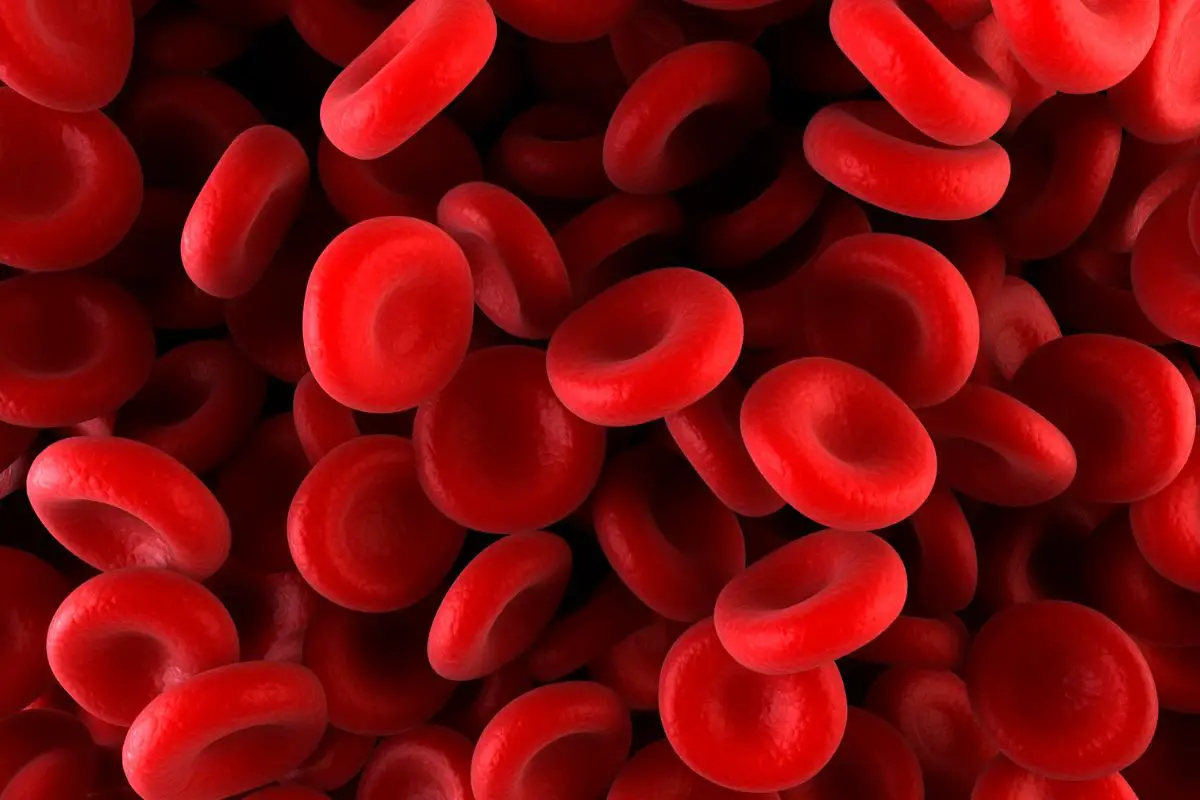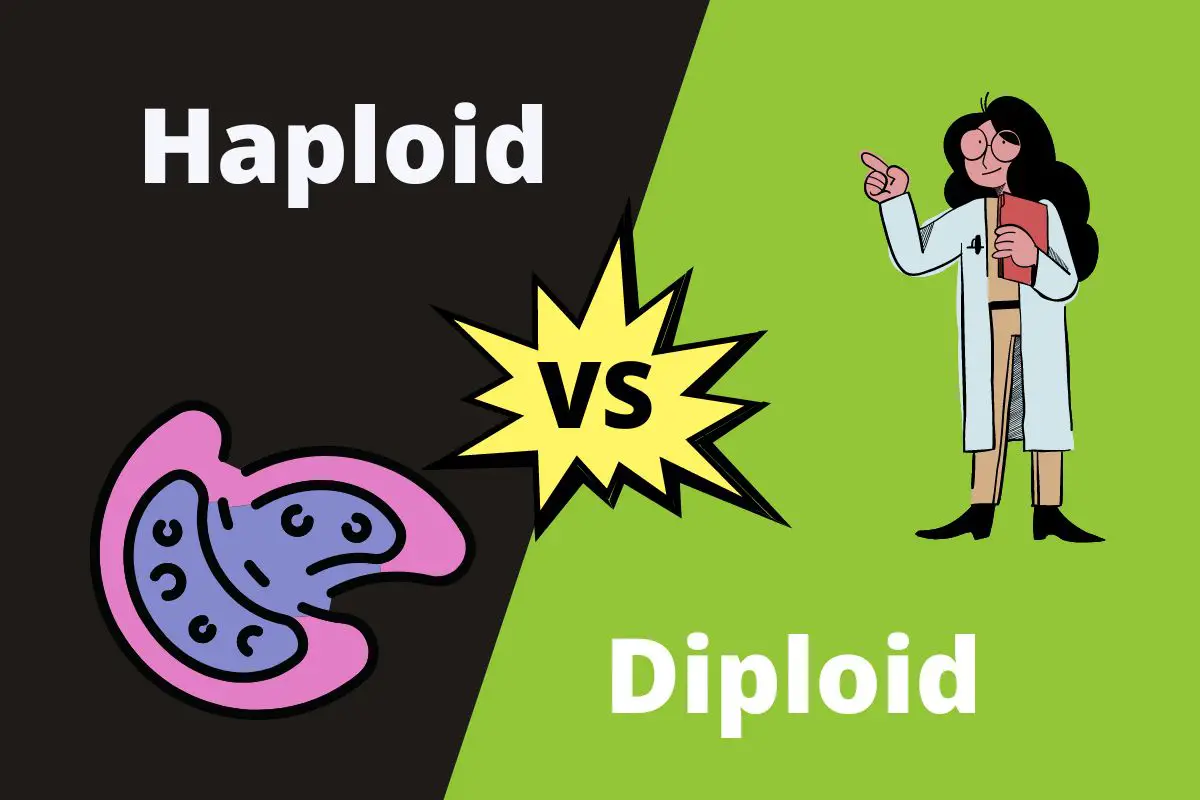A single set of chromosomes in a haploid cell is formed during meiosis. A diploid cell has two sets of chromosomes, resulting from mitosis cell division.
A cell’s nucleus (membrane-enclosed organelle within a cell) contains chromosomes made up of tightly packed DNA. These chromosomes include genetic information. And based on “ploidy” or the set of chromosomes, there are two main types of cells – haploid and diploid.
Learn the differences between haploid and diploid cells with other crucial information, including some examples of each.
Table of Contents
What is a Haploid Cell?
Haploid refers to a cell or organism with a single set of chromosomes. Haploid cells are formed during meiosis. Meiosis is the process of cell division in sexually-reproducing organisms. It produces gametes, such as sperm or egg cells.
At the time of meiosis division, a haploid cell replicates its genetic material, called chromosomes, to create four sets of chromosomes. Then, the cell divides into four daughter cells, each with one set of chromosomes.
In humans, each haploid cell has 23 chromosomes, and they maintain the number of chromosomes in the body.
During reproduction, a haploid cell fuses to form a diploid cell with two sets of chromosomes in an organism. The haploid cells are responsible for genetic diversity.
The organisms that have haploid chromosomes are termed haploid organisms—for example, ants, bees, and wasps. Sex cells or gametes (male sex cell, sperm and female sex cell, ovum) are haploid in eukaryotic organisms.
Examples of Haploid Cells
Gametes or sex cells are a popular example of haploid cells. They have half of the number of chromosomes as in diploid cells. Mules, for example, lack haploid cells and are unable to reproduce.
What is a Diploid Cell?
Diploid cells contain two sets of chromosomes. In an organism, one set of chromosomes comes from the father and another set from the mother. When these two haploid cells fuse, they form diploid cells.
Unlike haploid cells, diploid cells are formed by mitosis. Mitosis occurs when a cell divides, resulting in two daughter cells. These daughter cells contain the same genetic information as the parents and are responsible for organisms’ growth, functionality, and development.
Almost all mammals are diploid. Rats, however, are haploid. Polyploidy is also seen in some mammals. Polyploidy is the condition where a cell has more than two sets of chromosomes.

Examples Of Diploid Cells
All the somatic cells (blood cells, skin cells, and muscle cells) are examples of diploid cells except the sex cells or gametes. In human somatic cells, a total of 46 chromosomes are present.
Haploid vs Diploid – What’s the Difference?
| Haploid | vs | Diploid |
| A single set of chromosome | Number Of Chromosomes | Two sets of chromosome |
| Meiosis cell division | Cell Division | Mitotic cell division |
| Form sex cells or gametes | Types Of Cells | Form non-sex cells or somatic cells |
| Non-identical to parents | Similarity With Parent Cells | Identical to parent |
| The haploid stage of the life cycle is called the gametophyte stage. | Alternation Of Generation | The diploid stage of the life cycle is called the sporophyte stage. |
| Unfertilized eggs | Type Of Eggs | Fertilized eggs |
| 23 chromosomes | Number of Chromosomes In Humans | 46 chromosomes |
Differences Between Haploid and Diploid
Number Of Chromosomes
A single set of chromosomes is present in haploid cells, while in diploid cells, two sets of chromosomes are present.
Cell Division
Haploid cells undergo the process of meiosis cell division during reproduction, while diploid cells undergo mitotic cell division.
Types Of Cells
Haploid cells form sex cells or gametes, while diploid cells form non-sex or somatic cells.
Similarity With Parent Cells
Haploid cells are not genetically similar to parents due to cross-over during meiosis cell division.
On the other hand, diploid cells are formed after mitotic cell division. Thus, they are genetically identical to their parents.
Alternation Of Generation
The haploid stage of the life cycle is called the gametophyte stage. It’s more dominant than the diploid stage.
In contrast, the diploid stage of the life cycle is called the sporophyte stage. It’s less prevalent than the haploid stage.
Type Of Eggs
Haploid organisms produce unfertilized eggs. On the other hand, diploid organisms produce fertilized eggs.
Number Of Chromosomes in Humans
In the haploid cells of humans, there are 23 chromosomes, while in diploid cells of humans, there are 46 chromosomes.

Is It Haploid or Diploid?
Remember that haploid cells have a role in sexual reproduction and genetic diversity among organisms. In contrast, diploid cells play a role in growth and development.
- The term haploid refers to a cell with a single set of chromosomes.
- Gametes are egg or sperm cells, which are also haploid.
- All somatic or non-sex cells containing two sets of chromosomes are called diploids.

